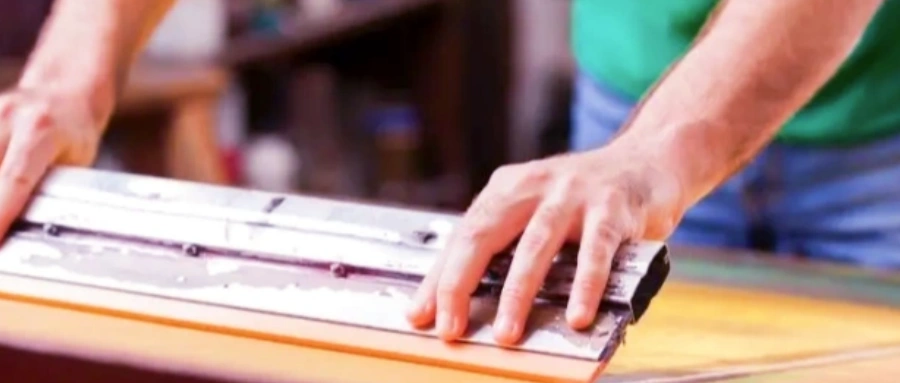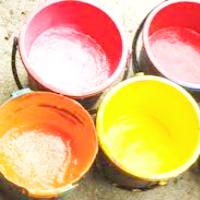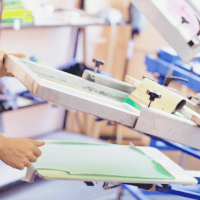Ink plastisol is widely used in screen printing. Discover the 5 essential advantages and disadvantages of using plastisol ink.
What are the disadvantages of plastisol?
Ink plastisol is widely used in the screen printing industry for its durability and versatility. However, like any material, it has its downsides. One of the primary disadvantages of plastisol is its environmental impact. Plastisol inks contain PVC (polyvinyl chloride) and phthalates, which are harmful to both human health and the environment. Although advancements have been made in creating phthalate-free plastisol inks, the fact remains that plastisol is not biodegradable, contributing to plastic waste.
Another disadvantage is the curing process. Plastisol ink requires high heat (approximately 320°F or 160°C) to fully cure, making it less energy-efficient than other inks. This is particularly important for businesses with high-volume printing needs, as maintaining these temperatures in a large print shop can lead to higher energy costs.
Moreover, plastisol inks are not as breathable as water-based inks, which can make garments printed with plastisol feel heavier or less comfortable. This can be a concern for some customers, especially when printing on t-shirts for warmer weather.
Is plastisol better than water-based ink?
The debate between ink plastisol and water-based inks is an ongoing one, with each having its pros and cons. Whether plastisol is better than water-based ink depends largely on the needs of the project and the desired outcome.
Plastisol inks are known for their opacity and vibrant colors. They tend to sit on top of the fabric, providing a rich and bold finish, which is great for designs requiring high contrast or intricate details. The curing process also makes plastisol more durable, especially on dark fabrics.
However, water-based inks have their own set of advantages. Water-based inks are more eco-friendly because they don’t contain PVC or phthalates, making them a better choice for businesses focused on sustainability. Water-based inks also absorb into the fabric, resulting in a softer finish that can enhance comfort and breathability. This makes water-based inks popular for lighter garments and designs that require a subtle, natural look.
Ultimately, whether ink plastisol or water-based ink is better depends on factors like the type of fabric, design complexity, environmental considerations, and customer preferences. For those who prioritize durability and vibrant colors, plastisol may be the way to go. However, for those who value eco-friendliness and a soft touch, water-based inks may be a better choice.
What are the disadvantages of water-based ink?
While water-based inks are an environmentally friendlier option, they come with their own set of challenges. One of the biggest disadvantages is their limited opacity, particularly on dark fabrics. Water-based inks tend to absorb into the fabric, which can result in a faded or washed-out appearance if not applied properly. This makes them less suitable for printing on dark-colored garments unless special additives are used.
Another drawback is the curing process. Water-based inks require a much higher level of precision when curing. Over-curing can result in cracking, while under-curing leads to incomplete drying, which could result in smudging or fading over time. Additionally, water-based inks tend to be more sensitive to the ambient humidity, which can affect how they perform during the printing process.
Water-based inks also require a more controlled environment, which might not be ideal for large-scale production. They have a shorter shelf life than plastisol inks and can dry in the screen if not used within a specific time frame, making setup and cleanup more challenging for printers who don’t have the right tools or environment to work with them.
What is plastisol ink used for?
Ink plastisol is primarily used for screen printing on apparel, including t-shirts, sweatshirts, and other garments. Its ability to provide bright, opaque prints makes it the ink of choice for designs requiring solid colors and strong contrast. Plastisol is particularly popular for printing on dark fabrics or fabrics that require a bold, vibrant design.
Aside from apparel, plastisol ink is also used for printing on other materials such as textiles, posters, and even certain plastics. It’s especially favored in industries where durability and longevity are key, such as sportswear or promotional merchandise. Additionally, plastisol ink is ideal for creating specialty prints like puff prints, glitter prints, and high-density prints, adding versatility to its use in various creative applications.
Because plastisol sits on top of the fabric rather than absorbing into it, it is highly resistant to fading, making it a popular choice for items that will be subjected to frequent washing and wear.

What ink is best for screen printing?
The best ink for screen printing depends on your specific needs and preferences. If you are looking for durability and vibrant colors, ink plastisol is an excellent choice. It is versatile, provides opaque colors, and is perfect for designs that need to last over time. It’s especially effective on dark fabrics and can withstand multiple washes without fading.
However, if you are looking for an eco-friendly option that provides a soft, breathable finish, water-based inks might be more suitable. They are especially great for light-colored fabrics and designs where a more natural look and feel are desired.
For some types of screen printing, such as when printing on specialty fabrics or when creating textures like puff or metallic prints, plastisol is typically the better option. On the other hand, for softer prints or for a greener alternative, water-based inks might take the lead.
How many washes does plastisol ink last?
One of the key advantages of plastisol ink is its durability. When cured properly, plastisol prints can last for many washes without fading or cracking. On average, plastisol ink can withstand between 50 and 100 washes, depending on the garment’s material, the curing process, and how well the print is cared for.
This long-lasting quality is why plastisol ink is preferred for items that need to endure heavy use, like promotional merchandise or sports team apparel. However, it’s important to note that to maximize the longevity of plastisol prints, proper washing and care are essential. It’s recommended to wash garments printed with plastisol ink inside out in cold water and avoid using harsh detergents or drying them on high heat.
Conclusion
Ink plastisol has been a staple in the screen printing industry for many years, and its popularity shows no signs of waning. While it offers several advantages, such as vibrant colors, durability, and versatility, it does come with its challenges, such as environmental concerns and the need for high heat curing. However, when compared to water-based inks, plastisol still holds its ground as a preferred option for many print shops, especially when longevity and boldness are prioritized.
Choosing between ink plastisol and water-based ink ultimately depends on your printing needs, the type of garment you’re printing on, and whether you prioritize eco-friendliness over durability or vice versa. Whether you’re printing for a large business or a small creative project, both inks have their place in the world of screen printing, and understanding their strengths and weaknesses can help you make an informed decision.










